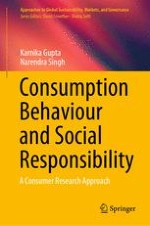This book investigates the concept of consumer social responsibility (CnSR) by considering the combination of ‘consumption behaviour’ and ‘social responsibility’. It puts forward a theory of responsible consumption behaviour, then models and empirically tests this theory using quantitative research methods. In so doing, the book offers a new consumer behaviour model: the C-A-C-B (Concern-Attitude-Commitment-Behaviour) model.
The book appeals to readers interested in consumer behaviour, research methodologies, social responsibility, corporate social responsibility, segmentation and profiling, sustainability, and structural equation modelling with path analysis and confirmatory factor analysis. The book also offers concrete recommendations that will benefit businesses and governments alike.
